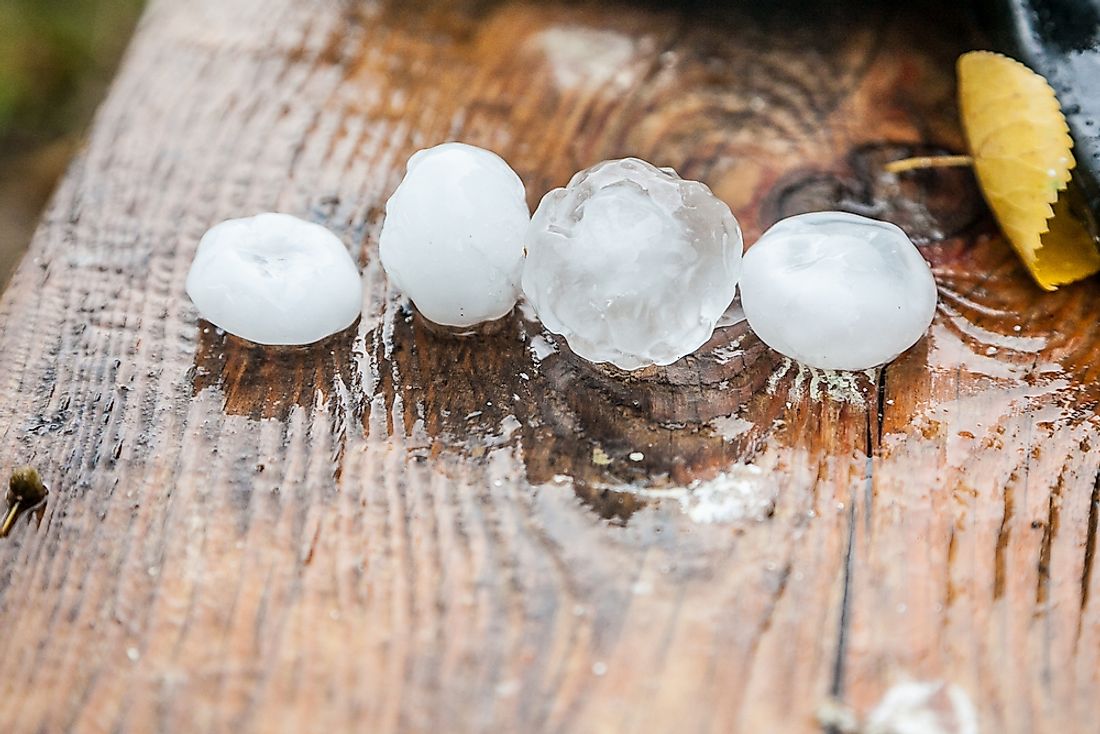What Causes Hail?

Hail and ice pellets are often confused, with most people referring to hail as “big” ice pellets. However, the two have distinct features and occur under different weather conditions. Hailstones are large, solid precipitated balls or irregular lumps of ice. Each hail is called a hailstone and measures between 0.2 and 6 inches. Hailstones, unlike ice pellets, fall at a higher speed as they increase in size, though their interaction with air, wind, and rain may slow their descent. Hail often accompany thunderstorms, and about 3.7 kilometers of the parent storm since it is produced by the cumulonimbus. Several methods such as the use of weather satellites and weather radar imagery can be used to detect hail-producing thunderstorms.
Formation
Hail is formed in strong thunderstorm with intense updraft, a lot of water droplets, and great vertical extent. For the hail to form, the temperature of the cloud must be maintained below freezing point. Hail starts from a water droplet. As the temperature drops below the freezing point, the droplets become cool and freeze on contact with condensation nuclei. The storm’s updraft and the wind directed upward at a speed of about 110 ml/hr blows the forming hailstone to the cloud. As it ascends to the cloud, it passes through areas of cloud with concentrated humidity and cooled water droplets. The growth rate of the hailstone changes according to the humidity and the supercool water droplets it encounters. The speed of the hailstone also depends on its weight and position in the cloud updraft. When the hailstone gets into an area with high concentration of water droplets, it captures the droplets and assumes a translucent layer through a process known as accretion. The hailstone will keep rising in the storm until the updraft can no longer support its mass. It will then fall towards the ground as it continues to grow and may begin to melt as it passes through the air above freezing temperature.
Factors Favoring Hail Formation
Hail is mostly formed within the continental interiors of mid-latitude since the formation process is likely to take place when the freezing level is below 11,000 feet. Hail frequency can be increased by the movement of dry air into a strong thunderstorm. The movement of dry air increases the evaporation cooling, which in turn lowers the freezing levels of thunderstorm cloud allowing the hail to have a larger volume to grow. When air temperatures fall below -300C, the growth of hail becomes vanishingly small. Hail is always within the cloud at an elevation of about 20,000 feet at around thunderstorm. Between 10,000 and 20,000 feet, about 60% of hail is still within the thunderstorm while 40% lies within the clear air. Hail is evenly distributed in and around the thunderstorm at an elevation below 10,000 feet up to a distance of 3.7 kilometers.
Hazards
Hailstones are destructive and can cause a lot of damage to automobiles, plants, animals, aircraft, glass structures, and roofs. Hailstones are significant thunderstorm hazards to aircraft and can damage planes within seconds. On August 1, 2017, a pilot had to stay calm and safely land a packet jet whose windshield had been smashed by hailstones at Ataturk Airport, Istanbul. Vehicles have also suffered the wrath of hailstone, leaving some cars with dented parts, smashed windows, and shattered windshields. Hailstones may also cause concussion and fatal head trauma.











